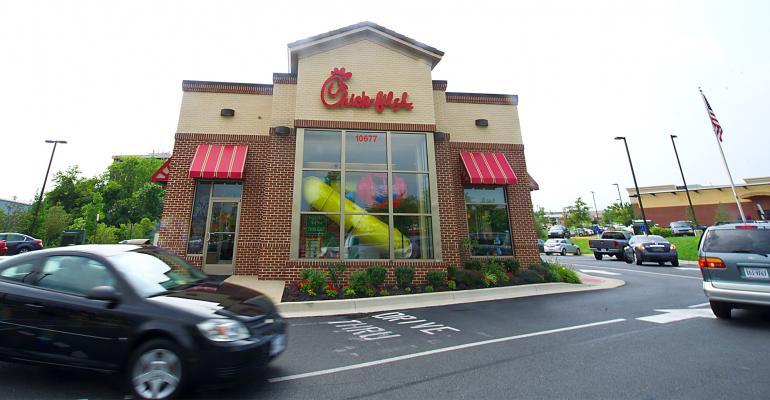As QSRs seek drive-through opportunities and other tenants launch smaller concepts, they see pad sites as more desirable.
Demand for retail pad sites is at an all-time high, driven primarily by fast-food and quick-service restaurants looking to add more drive-through locations and tenants looking to relocate from small-shop inline space in larger centers.
Pad sites and outparcels anchored by grocery operators and national big-box chains that are deemed essential—think Kroger, Home Depot, Publix, Target, and Walmart—continue to receive the most interest. But limited retail development has forced a shortage of new pad sites and created a frenzy for those that are available, even ones that tenants bypassed or overlooked in the past.
“Pad sites that were oddly shaped or too small or located in markets that weren’t on retailers’ radars—even those sites are in high demand now, so I guess you could call them ‘late bloomers’,” says Joe Schlosser, senior vice president of asset management for Phillips Edison & Co. (PECO), a Cincinnati-based REIT with a portfolio of nearly 290 shopping centers comprising roughly 30.4 million sq. ft. of space.
Hunger for drive-through sites
Pre-COVID, demand for pad site was already high due to growth from existing and new coffee shops, including Dutch Bros, Black Rifle Coffee, and Black Rock Coffee, along with expanding fast-food and QSR brands such as Chick-fil-A and Raising Canes.
Throughout the pandemic, restaurants with drive-throughs have performed better because they were able to continue to serve customers even when their dining rooms were closed, according to Walter Wahlfeldt, executive vice president with JLL Retail.
“Demand has been increasing throughout COVID as many retailers now believe that this drive-through requirement will become a new standard, especially with the growth of online ordering and pickup,” Wahlfeldt says.
Chipotle and McAlister’s Deli, for example, are now adding sites with pick-up windows so customers don’t have to get out of their cars to obtain their to-go orders. Meanwhile, Panera is increasingly seeking sites that allow for drive-throughs.
Restaurants and other retailers desiring buildings with drive-throughs need larger pad sites (assuming they don’t reduce the size of their dining rooms or do away with them completely). Additionally, a single drive-through isn’t enough for many fast-food and QSR operators.
In fact, many popular national brands are looking to “stack” drive-throughs, according to Ryan Ash, project director with Vestar, a Phoenix-based retail owner, and landlord with a portfolio of 30 million sq. ft. throughout the western United States.
In Texas, for example, newer What-A-Burgers have as many as three drive-through lanes. Likewise, Chick-Fil-A has begun to add a second drive-through lane to locations with enough space.
Repurposing and redeveloping dark buildings
Though merchant developers continue to be big players in pad site development and leasing, savvy shopping center investors are finding ways to unlock the value in their existing projects by repurposing dark single-tenant buildings demolishing obsolete single-tenant buildings, and developing new ones in their place.
Schlosser estimates that 85 percent of today’s pad site opportunities are redevelopment plays. He points to Alameda Crossing, a 141,702-sq.ft. center in Avondale, Ariz. that is anchored by Sprouts and JOANN Fabric and Craft Stores and is adjacent to a freestanding Kohl’s.
PECO purchased the vacant building located on an outparcel in front of Spouts that had previously been occupied by a bankrupt beauty supplies retailer. The REIT repurposed the 8,000-sq.ft. property into a multi-tenant building occupied by Pacific Dental and a regional taco restaurant and is actively leasing the remaining space.
Some landlords are also initiating conversations with existing anchor tenants to gain control of unused acreage or see if they’re amenable to transforming excess parking areas into pad sites.
“One of the biggest opportunities for developing pad sites will be to unlock real estate controlled by strong corporate occupiers who have excess acreage, either raw land or unused parking, to develop pads,” says Alex Sharrin, senior managing director with JLL Capital Markets. “The more developers that figure out ways to make inroads with these corporate occupiers, the more we’ll see this happen.”
Rise of multi-tenant pad sites
In the not-so-distant past, developers and owners would ink a deal with the first investment-grade tenant that expressed interest in a pad site. But rising construction costs, coupled with shifting retailer needs and a supply-demand imbalance, are changing the way developers and owners view pad sites.
Property owners really have to think about maximizing NOI for pad site projects, according to Sharrin. While higher rental rates are one way to achieve that, they’re not the only way or even the smartest way. Instead, owners are designing and developing multi-tenant buildings on pad sites that previously would have housed only one retailer.
“One of the biggest trends that we’ve seen on pad sites has been the rise in multi-tenant pad use versus single-tenant,” Sharrin says, adding that combining several tenants in a single pad site allows owners to double or triple their NOI.
At PECO’s Alameda Crossing, for example, the REIT constructed a new 4,800-sq.ft. building on a single pad site and leased it to a regional donut retailer, a local salon, and a chiropractor.
Historically, multi-tenant pads or parcels were rare, primarily because many retail tenants required more space and there wasn’t room for multiple users. But the increased availability and accuracy of consumer data from proptech companies has provided retailers with a much better understanding of their space needs.
Across the retail spectrum, retailers are adjusting their footprints, with many rolling out prototype stores that are much smaller than their traditional ones. And now that single tenants are requiring less space, it makes sense for both the tenants and the developers/owners to seek out multi-tenant pad sites.
Consider Walgreens, Chipotle, and P.F. Chang’s—all three of these retailers are testing pared-down concepts, with Walgreens focusing on its most profitable part of the business—prescriptions—and both Chipotle and P.F. Chang’s doing away with dining rooms and emphasizing delivery and takeout, which cuts space requirements in half, if not more.
Today, many retail tenants actually prefer multi-tenant pad sites. These types of properties fit nicely in the space between larger shadow-anchored strip centers and in-line small shop space in grocery-anchored centers.
“Multi-tenant pad sites bring in a greater variety of customers than a single-use,” Sharrin notes. “That’s a win-win for everyone.”






